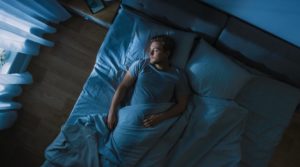
 Stroke is the second biggest killer amongst Australians, yet many of us would not be able to recognise the symptoms of stroke if we saw them. The Australian goverment recently announced $2m in funding to promote awareness of the F.A.S.T campaign, aimed at helping people to recognise the symptoms of stroke.
Stroke is the second biggest killer amongst Australians, yet many of us would not be able to recognise the symptoms of stroke if we saw them. The Australian goverment recently announced $2m in funding to promote awareness of the F.A.S.T campaign, aimed at helping people to recognise the symptoms of stroke.
According to National Stroke foundation (NSF) CEO Dr Erin Lalor, only about half of Australians know the signs of stroke, and one in ten of us could not spot a stroke if it occurred right in front of us.
“A stroke can cause the same kind of brain injury as a serious car crash and needs the same urgent medical treatment but despite the fact that one in six people will have a stroke in their lifetime, most Australians don’t really understand what a stroke is or what to do about it,” Dr Lalor said.
Strokes occur when a bleed or blood clot on the brain starves the brain of oxygen, and causes parts of the brain to die. Medical attention is required ASAP to restore blood flow to the the brain, if serious disability or death is to be prevented.
“One-third of stroke patients will die and one-third will be left with a significant disability that will make it impossible for them to live independently. Prompt medical treatment will save lives – and the signs of stroke are easy to learn. Someday it might be your own life you save,” Lalor says.
There are around 1000 cases of stroke per week across Australia, so learn to recognise the signs of a stroke. You could save the life of a family member, friend or colleague by reacting quickly.
F.A.S.T.
Face – has their mouth drooped?
Ask the person to smile. . Is one side of the face able to move while the other side droops or feels numb? A common symptom of stroke is weakness or numbness on one side of the face.
When I was about 16, the boy next door suffered from Bell’s Paulsy (generally sudden onset, but temporary, paralysis/weakness of one side of the face). I remember we were in his living room having a joke about something and instead of smiling, he snarled – or at least I thought he did – it was just a one-sided smile. He also couldn’t feel or taste any of his lime cordial as he swallowed it. He just thought he had a bit of a cold. If you happen to notice something strange about the way someone smiles at you, check it out, don’t just assume they thought you weren’t funny!!
Arms – can they lift both?
Ask the person to lift both arms. Does one feel week, or drift down while trying to lift it? Strokes often cause numbness or weakness in one arm or leg.
Speech – is it slurred, can they understand you?
Ask the person to say a simple phrase such as “The grass is green” or “The sky is blue.” Another common stroke symptom is slurred speech or mind confusion. If the person doesn’t understand what you’re saying, they can’t repeat the phrase, or if you can’t decipher what they are saying, it may be the result of a stroke.
Time – is critical. If you see any of these signs, ring 000 straight away.
Every minute counts when it comes to stroke. The most effective treatment for stroke must be received within the first three hours following onset of the stroke. After that small window of time, treatment may not be available. Early intervention care may mean a good outcome.
If you are watching someone having a stroke, note the time of the onset of symptoms, as this can aid in their treatment.
Signs and Symptoms in Women and Men
Men and women may experience the same signs and symptoms of stroke, including facial, arm, and leg weakness and numbness; speech difficulty; vision problems or dimness usually in one eye; dizziness; loss of coordination; a severe headache; or a loss of consciousness. These symptoms may worsen over time or go away.
However, women often report stroke symptoms that men don’t seem to experience. These symptoms all come on suddenly and include limb or facial pain, hiccups, weakness, chest pain, shortness of breath, nausea, or heart palpitations. These unique symptoms may accompany the symptoms noted in F.A.S.T.
Any time you suspect stroke, play it safe and seek emergency medical attention.
Stroke Prevention
- don’t smoke
- drink only in moderation,
- control diabetes if you suffer from it
- control cholesterol and blood pressure
- get regular exercise
- eat a diet low in sodium, calories, fat, and cholesterol.
If you take control of your health today, you may just avoid a stroke in the future.



No comment yet, add your voice below!